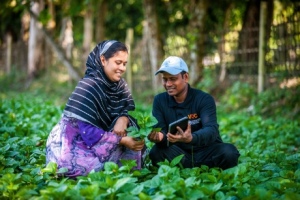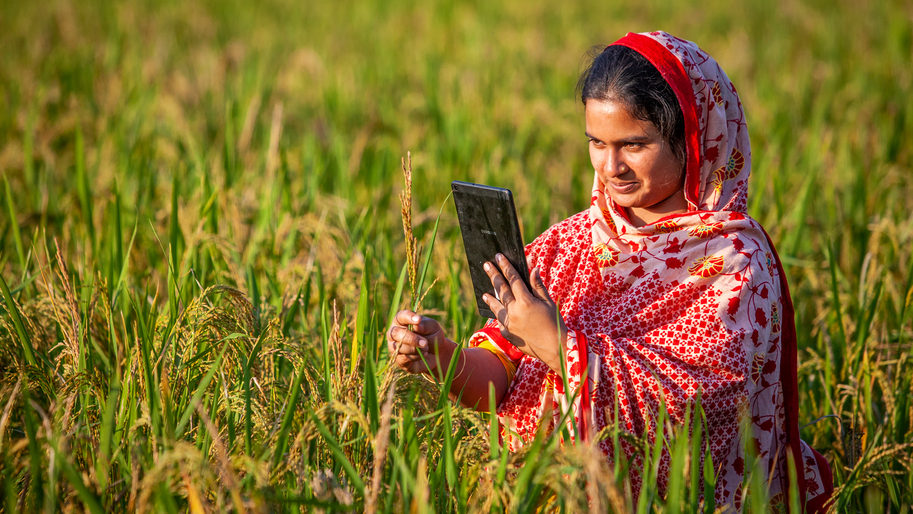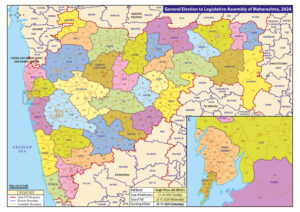
Dhaka: Ever since he was about 16 years old, Ziaur Rahman has been working on his family’s farm in the Rangpur district of northern Bangladesh, growing rice, potatoes and other vegetables. But Ziaur, now 34, is feeling increasingly squeezed by today’s harsh economic realities. Even with his wife Sahanaz and his brother and sister working on the farm, as well as three day-labourers, providing for their family of eight isn’t becoming any easier.
“Our biggest challenge is that prices for things like fertilizer, pesticides and seeds are high and rising rapidly, as well as the maize for cattle feed, but the money we get for our crops and vegetables in the local market isn’t going up,” Ziaur says.
It is a story that is all too familiar for farmers across the planet, yet some help is at hand from digital technology. Under its flagship global 1 000 Digital Villages initiative, FAO is working with the government and farmers’ organizations in Bangladesh, including the national network, the Sara Bangla Krishak Society (SBKS), to facilitate access to digital platforms. These enable farmers to reach a wider market and improve their incomes by getting better prices for their crops.
A key aim of the initiative is to narrow the ‘rural-urban digital divide’. Nearly 60 digital villages are now up and running in Bangladesh, in three districts including Rangpur where Ziaur lives.
Beyond a call for help
Enabling farmers to get a better deal for their produce and tap new markets is one of the most important functions of the Digital Villages. In Bangladesh, much of this has been implemented under the G20 Global Agriculture and Food Security Program’s Missing Middle Initiative. At the height of the pandemic, with FAO’s support, SBKS helped its members establish Virtual Call Centres (VCCs), providing crucial support to farmers in times of crisis.

Salma Aktar, who worked in one of the call centres in Ziaur’s district, saw firsthand the benefits that the initiative brought to her own family and fellow villagers. She says: “As a farmer’s daughter, I saw that potatoes were always sold at a low price. We could not make much profit selling potatoes as they cost a lot to grow. But after working with our VCC, I saw that we can make good profits by exporting our potatoes.” She adds, “This improved our financial health. We started not only exporting our own potatoes but also those grown by most of our villagers. They’re delighted to be making more money and the village is seeing economic development.”
With the former VCC staff now able to assist villagers face-to-face, many of the call centres have grown into Digital Village service centres, each with a dedicated staff member ready to support farmers in their community.
Targeting 1,000
Looking towards the future, FAO is working with farmers’ organizations to analyse how best to develop and expand the Digital Villages network and link it to Bangladesh’s national digital agriculture strategy, refining business models and piloting new digital solutions to help farmers such as Ziaur to reap more benefits.
“There is an excellent opportunity here to scale up the Digital Village initiative to help address some of the nutrition security issues in the country as well as food security challenges,” says Robert D. Simpson, FAO Representative in Bangladesh.
FAO is implementing the Digital Villages initiative in all regions of the world. In the Asia-Pacific region, other countries involved include China, India, Japan, the Republic of Korea, several Pacific Island states, Nepal, Malaysia, Thailand and Vietnam. FAO’s goal is to reach 1 000 villages, fostering broad partnerships to scale up innovation and offering a more connected and prosperous future for rural communities.
An important part of the initiative is to help farmers improve their digital literacy, making use of technologies to find solutions to daily challenges while also getting access to information about the latest agricultural techniques.
When he attended one of the digital literacy trainings, Ziaur says he learned to use his smartphone to carry out an array of tasks, from making internet calls to using banking apps. “I learned how to solve my everyday problems, both agricultural and non-agricultural, saving me time and money.”
Among the digital agricultural tools he acquired was a mobile app to identify and remedy plant diseases, as well as to determine which new crops could grow well in his area. The training, together with help from his local Digital Village Centre operator, helped him access information about online marketing platforms and services provided by the government, as well as critical weather forecasts.
By buying agricultural inputs and selling produce online, Ziaur can be more productive with the time and money which he would have otherwise spent on travelling to the nearest town. “I buy seeds and sell vegetables through Facebook groups, which helps me to reach customers outside my local area and sell at more competitive prices.” Ziaur reckons that making use of digital technology has helped him boost his income by a third to some USD 232 (BDT 20 000) a month.
Source: FAO News and Media Office, Rome
– global bihari bureau





